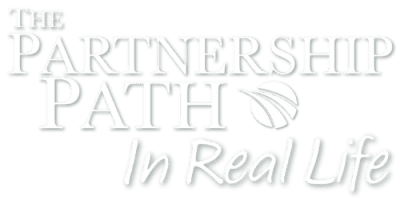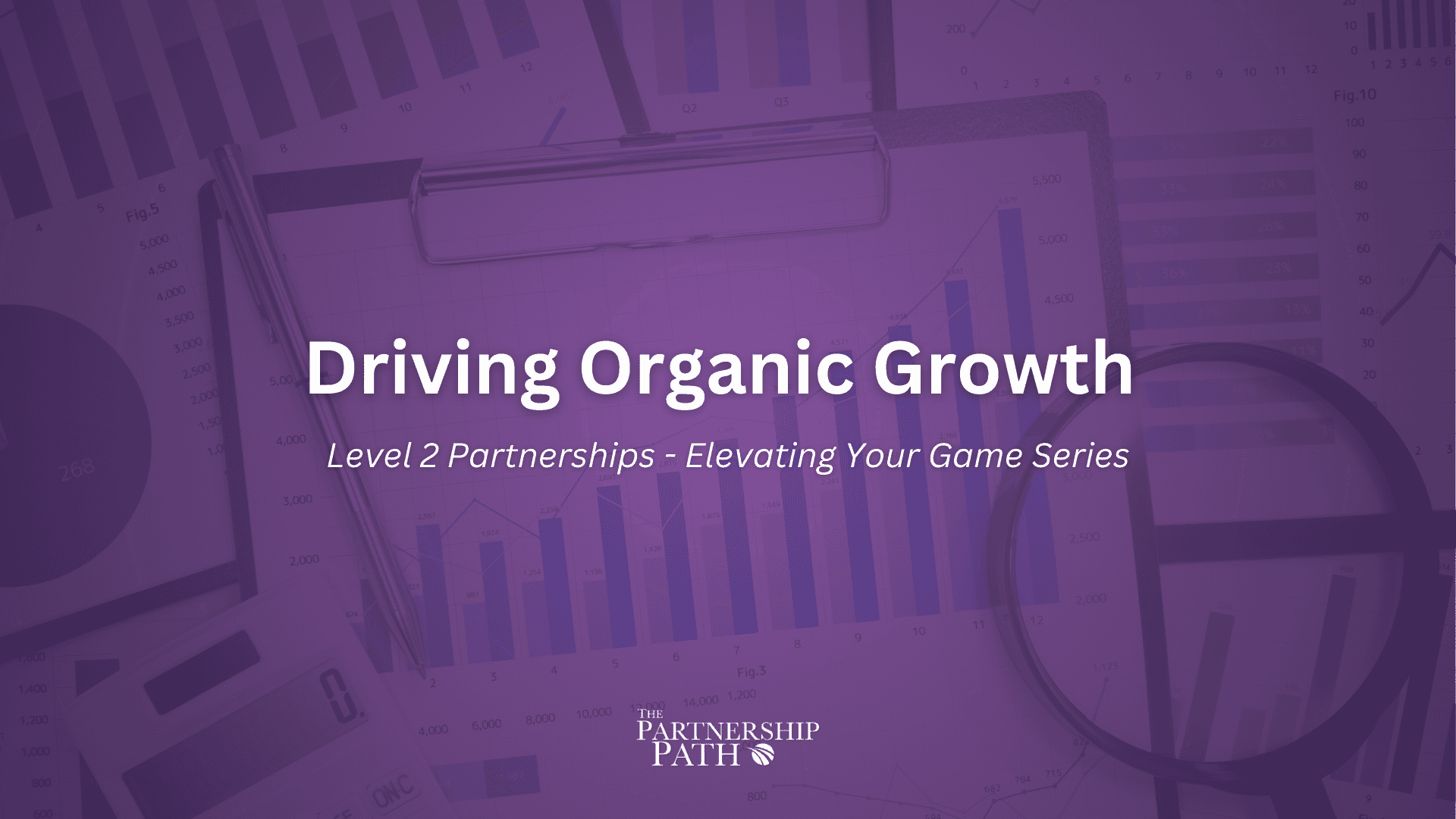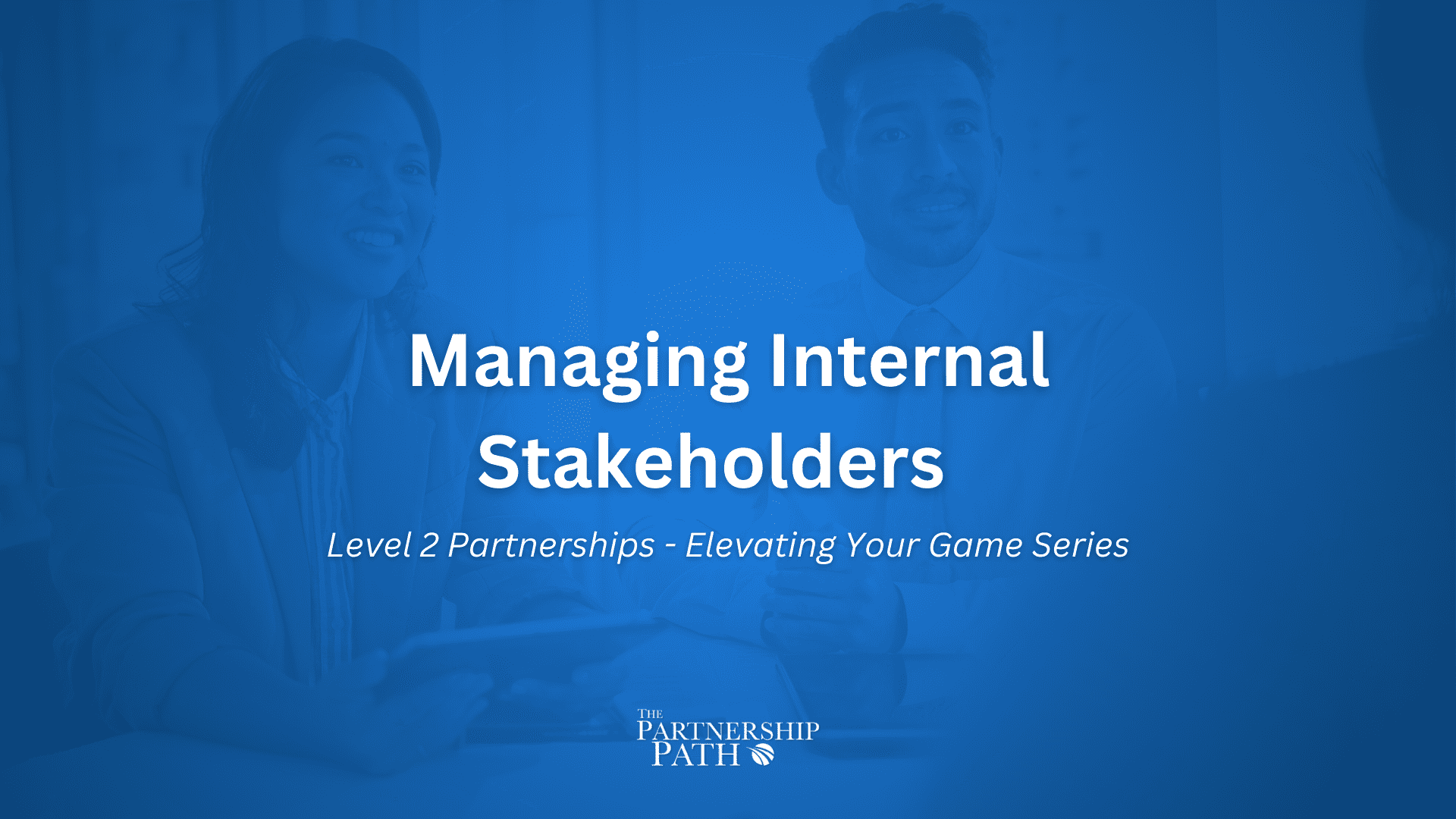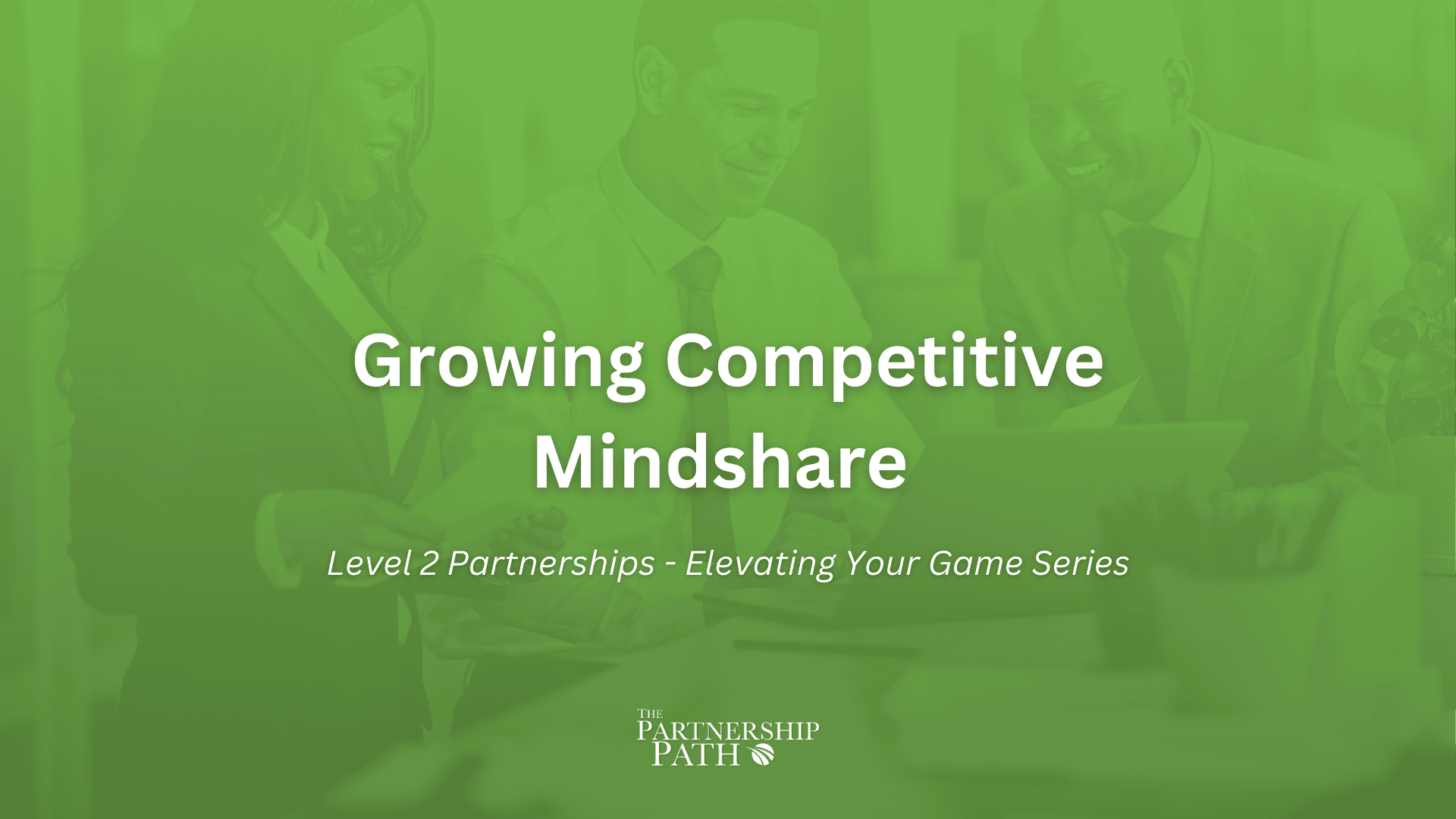IRL Episode
Driving Organic Growth with Yvonne Matzk at Coachere
Episode Summary
In today’s episode of The Partnership Path in Real Life, Yvonne Matzk, CEO and founder of Coachere and the Channel Community, shares invaluable strategies for fostering organic growth within partnerships. Her extensive experience, spanning over 25 years in the tech industry, brings a wealth of knowledge on bridging the gaps between vendors and resellers.
This conversation is particularly valuable as it highlights practical, actionable insights that can help both new and seasoned professionals navigate the complexities of partner management.
Transcript
John (00:01)
Well, hey everybody and welcome to another episode of the Partnership Path in Real Life. I am so excited to have you here with us today, Yvonne. Thank you so much for coming on the podcast with us. And before we get too far, I want to give you a chance to introduce yourself to our listeners. Tell us a little bit about who you are, what you do, and how long you’ve been working with partners.
Yvonne (00:23)
Thanks, John. And again, thank you for inviting me on. So, Yvonne Maxx, I’m the CEO and founder of a coaching consulting business and also the founder and chair of the Channel Community, which is a community of
like-minded individuals that was built to give back to the next generation of talent by the way of free of charge mentoring. But prior to that, I worked for a very small reseller. don’t know whether you’ve heard of them, a small company called CDW. Just a small little one, yeah, where I was part of an acquisition that they made into the UK and I was responsible for
John (00:52)
Just a small little guy, yeah.
Yvonne (01:04)
the relationships with all of their strategic vendors and all of marketing for everything outside of the US and Canada. So I have a small amount of experience of working with partners.
John (01:10)
Nice.
Yeah, just a little bit. Now, listen, Yvonne, I try and give people who come on the podcast an opportunity to, you know, advertise whatever. So let me give you just one more minute to talk about this channel community. Is it UK only? How do you get involved in it? If we’ve got people listening who want to be a part of that, what do they do?
Yvonne (01:35)
Currently is UK only in terms of because most of the people are based in the UK. So we feel that mentoring does work best if you can still get together. I know you can do it virtually, but it’s because people understand the UK market, et cetera. there’s no reason why it won’t scale at some point. We’ve only just become a CIC in April. It’s gaining traction, growing legs.
John (01:41)
Okay.
Yeah.
Nice.
Yvonne (02:01)
Who knows, could come stateside soon. But if you are in the UK or you have EMEA as a region, then you just go to the channel community website, which we can provide, I’m sure, the details of post and it will tell you how to get involved as either becoming a channel buddy, which is a mentor, getting a channel buddy as a mentee, or just being part of a community of really nice, cool people.
John (02:27)
I love that. I love that. That’s very cool. Thank you for that. And I hope we get some people headed your way. All right. So we’re here today, though, to talk about organic growth. You heard the episode that Tony and I just did talking about how to try and help partners grow organically. So let me just kind of start with an open-ended thing. You listened to that episode. What resonated for you in that? Or what stood out? Or did we miss anything?
Yvonne (02:41)
Yep.
John (02:56)
Let’s just start with Yvonne’s take on that episode.
Yvonne (03:00)
I thought it was great and I liked the way that you explained the HBR module about how to grow in different metrics. Obviously, you’ve got more of what you have with the existing customers or the hardest one, is net new, internet new. We all try and avoid that one. I also love what Tony said about you can’t just walk into an organization and bash someone over the head.
John (03:15)
Right.
Yvonne (03:26)
expect people to want to sell your stuff, right? You know, it’s very crowded market and people, a lot of the time in my personal experience, have seen it from the vendor side, they’ve come in, they’ve got their full suite of solutions without really understanding what your go-to market is as the partner. So I love the fact that Tony picked up on that and yourself and you know, it’s like, what is it that you do well? What do they do well? What can we do that’s even better together?
John (03:30)
Yeah.
Yeah.
Yeah.
Yeah. You mentioned that the fact that you spent a lot of time at CDW, that’s got to be a fascinating viewpoint for that particular set of pressures because you’re in the middle of it. It’s one thing when there’s two players going at this, right? But with CDW, you are sitting in between the strategic vendors and the resellers.
Talk a little bit about that. How do you do that when we think about organic growth with resellers? How do you take that pressure that’s coming from the big boys and translate that into some actionable stuff through the resellers? What’s that like?
Yvonne (04:35)
Yeah, so I used to call my division the United Nations or like Switzerland because literally that’s what it felt like in some times because you’ve got it coming at you from all angles and you’re the one that’s stuck in the middle sort of trying to navigate your way around and pull out the things that really are going to be of value and of benefit. Of course, the vendor wants you to sell everything and of course the sellers want to sell whatever they want.
John (04:43)
Yeah.
Yeah.
Yvonne (05:03)
So it’s how can you bridge the gap between the two and find something that’s of common ground that you both want to achieve, that you can do together, that you can agree upon. And it’s not easy, but when it’s done well, that’s when you, you know, you smash it through the park and win awards. But I think it’s critical to get to understand what those things are, rather than just assume you know what they want and vice versa.
John (05:27)
Yeah.
Look, I think part of the reason I bring that up for you is, I’m sure we don’t have a ton of people in the listening audience who are working for that middle man. We have a few, but I do think that what you’re describing is actually super common in terms of the feeling and the actions that are necessary. Even if you’re just a PAM or a PDM working for the big vendor.
trying to work through someone else. You’ve got bosses who are pushing you to do things in it, right? So let’s get super practical. You said it’s so important to really understand where that kind of crossover is. I think of a Venn diagram, right? Like one big circle, here’s everything I’d like you to sell, another circle of everything they actually want to sell, and there’s only a small overlap. But what does that look like?
Yvonne (05:59)
Yeah.
Yeah.
John (06:25)
In real life, like what’s that meeting look like? What’s that discussion look like? How do you do that?
Yvonne (06:31)
Well, look, think where I’ve seen it work incredibly well and where we’ve had the most success or had the most success in the past is where people really understood our business and what we were trying to do for our customers, which is the end customer. That’s the person that’s going to be consuming this technology, right? Because think a lot of people forget those people and then just assume it’s about the vendor selling to the partner that then sells to the end user.
If you focus on the end user and solving a problem for them, then you can’t go far wrong and looking at how your technology may add value to something that’s already existing there already, or is gonna completely transform something that’s new and exciting, because there’s two approaches to it. You’ve got the new shiny toy tech that comes rapid pace, which…
could be a game changer for certain demographics that you may be working in. So is it a demographic? What does that look like? Or is it something that you know is going to be very complimentary with what you’re doing already? it’s less of a, you’re not onboarding something totally new, you’re just adding to something that’s going to, know, one plus one is going to make three, not the other, you know, one plus one is just two. So it’s how you look at it in terms of really understanding the partner.
John (07:42)
Yeah.
Yeah.
Yvonne (07:54)
their end customer is, I would say, your starting point.
John (07:58)
Yeah. Well, you know, I’m curious about your experience there, Ivan. One of the things that I hear quite a bit in the people that I work with is that, especially in the reseller community, that there is a lot of partners who aren’t even super clear on who their target customer is, right? Like they haven’t really done some of that hard work of admitting everyone’s not my customer, right? Cause you know, a lot of those businesses think, well, I just want to
I just, whatever it is, I just want to get the customer, right? And so like, have you done some work to help people narrow down? Like based on your experience as a partner, here’s your ideal customer profile.
Yvonne (08:40)
Yeah, like most customers, most resellers or certainly the ones I’ve worked in in my 25 years in tech have all got a go-to-market strategy that they’ll have and they’ll have a unique value to a certain set of clients that they’re working with either from a vertical perspective. So that might be their focus on healthcare or their focus on their defense or like CW in the UK, for example, we were very strong in the mid…
to low enterprise market as well as public sector. So again, very different to the US because don’t make the assumption that organizations are the same because our go-to market in the UK and international was very, different to that of the US go-to market. understanding our target customer, looking at your technology in your portfolio and seeing where that could complement or add to that demographic. And then come to the…
John (09:19)
Yeah.
Yvonne (09:37)
the reseller with a potential solution. Say, look, I’ve noticed that you’re working with these customers already with having, you you’re selling this technology already. We see this can be really complimentary to what you’re already doing. And it’s in addition, it’s going to make you more money and we can attach more services to it. Can we have a conversation? Not like my boss wants me to sell more of this because I’ve got a target on my head, which is probably what happens.
John (09:58)
Yeah. Yeah.
Here’s my
quota. Here’s my quota. How much of it are you going to help me make? Yeah, exactly. Yeah. Look, I love what you’re talking about, the importance of focusing on kind of that customer model first, right? That we have to understand who we’re going after and how we can help them. And then everything else should relatively fall in place, which means
Yvonne (10:08)
Yeah, can you help me sell it? Yeah, yeah. Get that blue light out every quarter end or month end.
John (10:34)
saying no sometimes, right? I think that’s the other part of this organic growth idea is that it’s okay to say that that’s not going to work for me. That’s not the right thing for me. We need to do something different. Do you have some stories around that where you guys have had to say no to people or they’ve had to say no to the vendor? I mean, I know you do.
Yvonne (10:36)
yes.
Yeah, lot. I think, you know, before I took over the role in the UK, it was a bit like the OK Corral. Anybody with a promise of a credit card and a trip to the pub seemed to gain access to our sales floor, which was great if you were mates with that salesperson and the credit card, but didn’t really align to our strategic objectives and what it is that we wanted to be known for. So we did quite a bit of work around identifying
John (11:05)
Hahaha
Yvonne (11:26)
what was our strengths, what was our capabilities, what could we deliver as services, then what partners did we want to work with within that, and then everything else. So that’s your strategic partner. These are your top tier ones that we can not just reach with the highest level of accreditation, we can deliver the product, we’ve got in-house capability, we can wrap a load of services around it.
We can maybe have an offspring of a cloud offering in our own environment as well. If it ticks all of those boxes, then you’ve got a really strong point. If you’re coming to us as a peripheral type technology provider, we’re probably not going to have a huge amount of time to spend with you. And it’s not because we don’t like you. It’s just we have a finite amount of time and energy to focus on.
John (12:12)
Yeah. Right.
Yeah. Yeah.
Yvonne (12:19)
the things that are gonna make the business successful and the partnership, right? And it’s just having those honest grownup conversations about it.
John (12:27)
I, you, you have nailed one of my, one of my pet peeves about this whole profession of kind of partner channel professionalism, which is we’ve spent so many years trying to say that this is a quote unquote relationship job. And don’t get me wrong, relationships are critical in this, but that has forced a lot of people in this role to start to think, well, if I’m liked,
Yvonne (12:49)
Yeah.
John (12:57)
then things are going to go well. if I like the partner, things are going to go well. And it’s not personal. Like your point of let’s have a grownup conversation, I think is so poignant. It’s so on target that we need as that’s one of the ways we make this a profession is by being professional and saying, yeah, this is a business conversation. Yeah, I like you, but
Yvonne (13:06)
Yeah.
Yeah, absolutely.
John (13:25)
That doesn’t make sense for us. That’s not good business for us.
Yvonne (13:30)
Yeah, mean, at the end of the day, it’s going to save time for everybody, Because you’re not going to make a success of it unless you have these grown-up conversations. Having difficult conversations isn’t easy. It’s easy just to let the vendors on the sales floor to run wild.
John (13:34)
Yeah. Yeah.
Yvonne (13:49)
All that it’s doing is a distraction away from what we as an organization want to do. and vice versa. If you’re not being honest with the vendor, they’re just going to waste a huge amount of their time on something that they’re never going to sell. Because just because they’re mates with Brian over in one office doesn’t mean that it’s the right technology for the whole organization.
John (14:00)
Right. Yeah.
Yeah. Yeah. We’ve seen that in my, in my client base. We’ve seen that with some of the bigger vendors in the industry who, you know, went down a strategy of just trying to get ISVs to build anything on their platform. Right. And then they end up with all these, all these applications on their platform that nobody’s buying. Cause it wasn’t built with a customer of mine. was just get anything on my platform. Right. And so, yeah, it,
Yvonne (14:25)
Yeah.
Exactly.
John (14:36)
It’s crazy how much time and money we spend if we don’t focus on the end customer and realize that it’s a business discussion. Yep.
Yvonne (14:44)
Yeah, I mean,
you think about all that time and energy you’re wasting on something that’s never going to go anywhere. You could be actually spending with a partner that that fits your, you know, USP and can build on your ecosystem and actually smash your quota. It’s just being honest about that, right?
John (15:00)
Yeah, for sure.
Yeah, totally. All right, Yvonne, look, part of what we try to do in these in real life episodes is keep it nice and short. You’ve already dropped some really great valuable bombs here. I love it. I want to give you one last chance. I kind of dominated where we went. So is there anything else that you want to make sure the listening community walks away out of this episode in terms of, hey, if you’re
If you’re trying to grow your partner organically, make sure you whatever. Like, I mean, is there anything else you want to make sure we get in before we close?
Yvonne (15:36)
Yeah, just, well, I think we’ve already covered it, but just make sure you do your research. Explore where you can actually add some value and look at where it’s complementary to something that they may already be working with. And then you should have no reason not to be successful.
John (15:41)
Yeah.
I love it. Yvonne, thank you so much for coming on an episode with us. I absolutely love this. It’s so good to meet you and spend some time with you. And I’m hoping that you’d be willing to come back again on another episode sometime if we can work it out.
Yvonne (16:01)
You too.
Love that, absolutely.
John (16:09)
Awesome. Thanks, Yvonne.
Yvonne (16:11)
All right, take care.
Key Takeaways
- Understanding the End Customer: Successful organic growth hinges on knowing the end user’s needs and how your technology can add value to their experience.
- Creating Strategic Alliances: Develop partnerships based on complementary strengths rather than just transactional relationships. This will foster mutual growth.
- Importance of Honest Communication: Engaging in candid discussions about capabilities and expectations streamlines efforts and maximizes potential.



